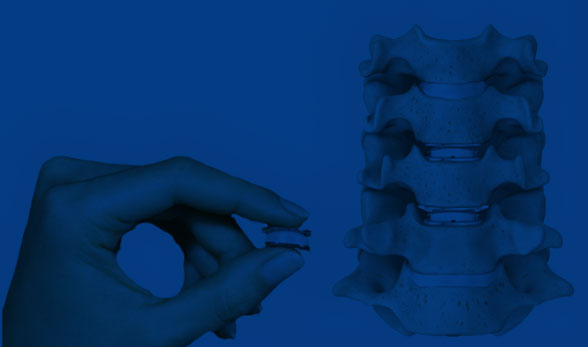Robotic Spine Surgery
If you are experiencing chronic back or leg pain that is unresponsive to conservative treatments, then you may be a candidate for minimally invasive spine procedure in conjunction with our robotic spinal system.
Robots have been used in surgery for years. Dr. Webb was fortunate to spend time training on Robotic Spine Surgery during his fellowship, learning under the guidance of Dr. Isador Lieberman-one of the surgeon pioneers and innovators of the spinal robot.
Robotic spine surgery is a form of minimally invasive spine surgery that involves the use of a robotic arm to assist surgeons in the placement of screws and other hardware into the spine with accuracy and precision. Robots do NOT replace surgeons in performing your surgery, but simply augment the surgeon so surgery is done in a more precise manner. The term, “robot,” implies a machine capable of carrying out a complex series of actions automatically. A true spinal surgery robot has yet to be created. Rather, they were designed to interact and assist surgeons – created in an attempt to make spine surgery safer and more efficient.
In addition, the spinal robot can assist surgeons in optimizing patient care by using computer navigation, much like a GPS in your car. The potential benefits for patients include a shorter hospital stay, less tissue damage and therefore less blood loss, less radiation exposure, and smaller incisions.
How It Works
When using the spinal robot, Dr Webb is able to plan for your surgery using a computer application days and even weeks before surgery.
Using the computer application, Dr. Webb can use your imaging studies to determine the size and trajectory of your screws and hardware. Then a patient specific plan is made based off of your 3D anatomy. This plan is used to guide the rigid robotic arm to a specific region of your spine during surgery, similar to a planned route or pathway on a GPS. The surgeon uses this pathway or route to accurately place the pedicle screws and other hardware on the day of surgery. By doing this, Dr Webb will ensure the correct size implants and screws will be available the day of your surgery and also takes the guesswork out of performing your implantation. This not only saves time in surgery (meaning a shorter surgery), but also decreases complications of misplaced screws.
On the day of surgery, your CT images along with Dr. Webb’s plan (taking into account your specific anatomy) are imported into the robotic computer system. The arm of the robot is the. mounted onto the surgical bed as well as rigidly attached to your spine via a small pin that Dr.Webb will insert during surgery. The robotic arm can move in 6 degrees of freedom to provide the preplanned screw trajectory and entry point thereby allowing Dr. Webb to manually perform the drilling and screw insertion through either an open or percutaneous procedure. During surgery, the operator of the robot will be present to direct the robotic arm to specific areas of your spine to accurately place the screws and other hardware with precision.
Using computer guided navigation, in addition to the robot, allows Dr Webb to display the surgical instruments and implants on a computer screen for Dr. Webb and the rest of the operating room staff to monitor throughout the case. This display allows Dr. Webb to view live feedback during your procedure for more precise implant placement.
It is important to understand that the decision to receive minimally invasive robotic spine surgery is individualized to each patient and their symptoms. Dr. Webb will discuss whether you are a candidate for this procedure at your visit.
References
Lieberman IH, Kisinde S, Hesselbacher S. Robotic-Assisted Pedicle Screw Placement During Spine Surgery. JBJS Essent Surg Tech. 2020;10(2):e0020. Published 2020 May 21. doi:10.2106/JBJS.ST.19.00020
Vo CD, Jiang B, Azad TD, Crawford NR, Bydon A, Theodore N. Robotic Spine Surgery: Current State in Minimally Invasive Surgery. Global Spine J. 2020;10(2 Suppl):34S-40S. doi:10.1177/2192568219878131
Staub BN, Sadrameli SS. The use of robotics in minimally invasive spine surgery. J Spine Surg. 2019;5(Suppl 1):S31-S40. doi:10.21037/jss.2019.04.16
D’Souza M, Gendreau J, Feng A, Kim LH, Ho AL, Veeravagu A. Robotic-Assisted Spine Surgery: History, Efficacy, Cost, And Future Trends [published correction appears in Robot Surg. 2019 Dec 23;6:25]. Robot Surg. 2019;6:9-23. Published 2019 Nov 7. doi:10.2147/RSRR.S190720




